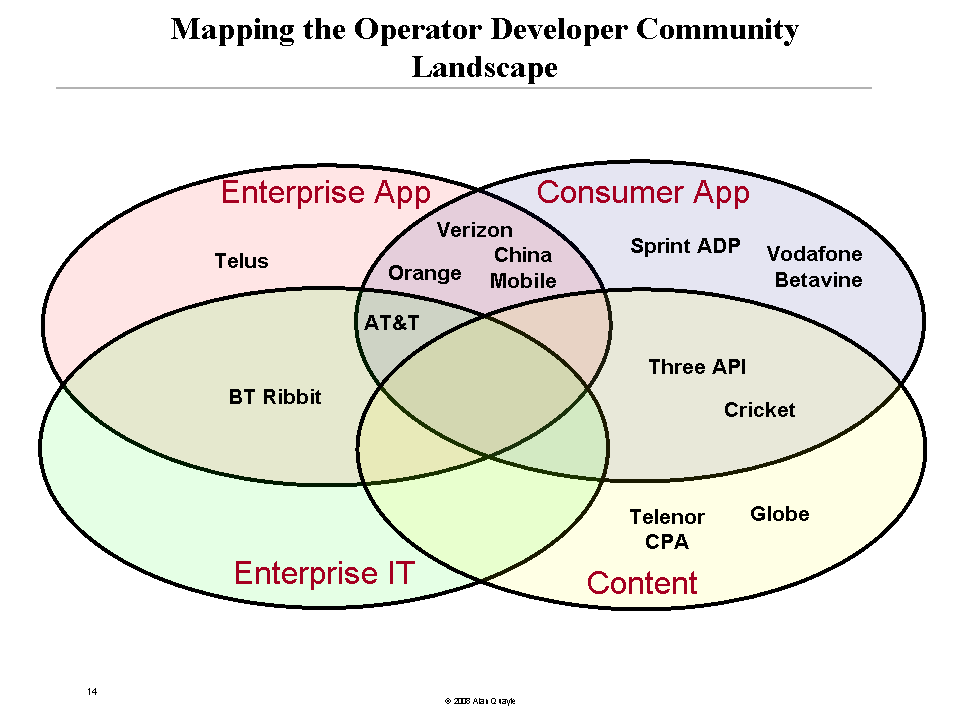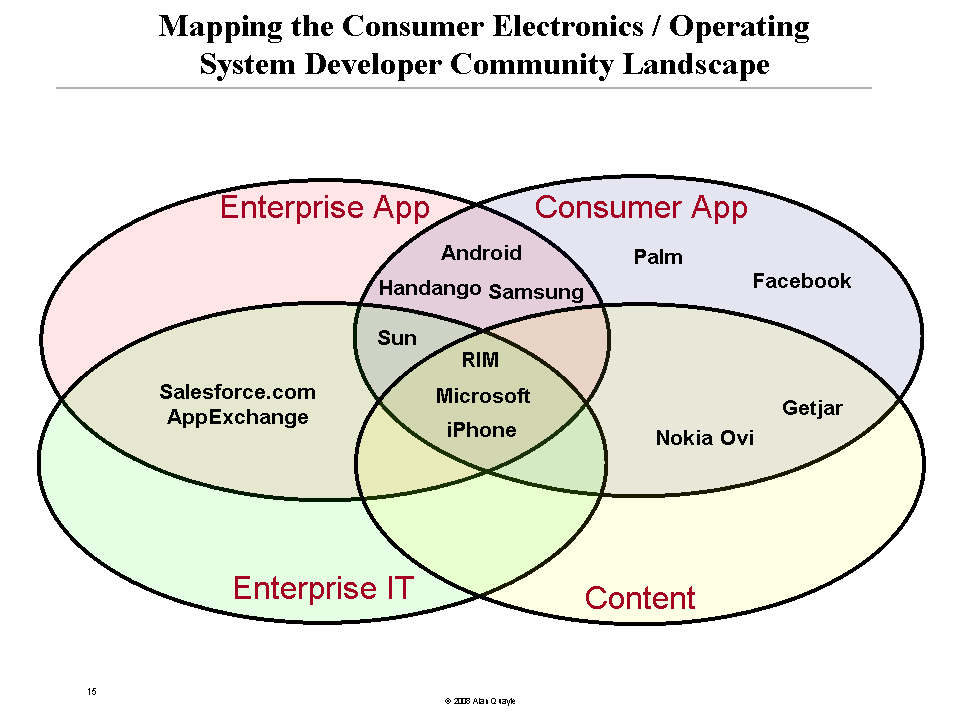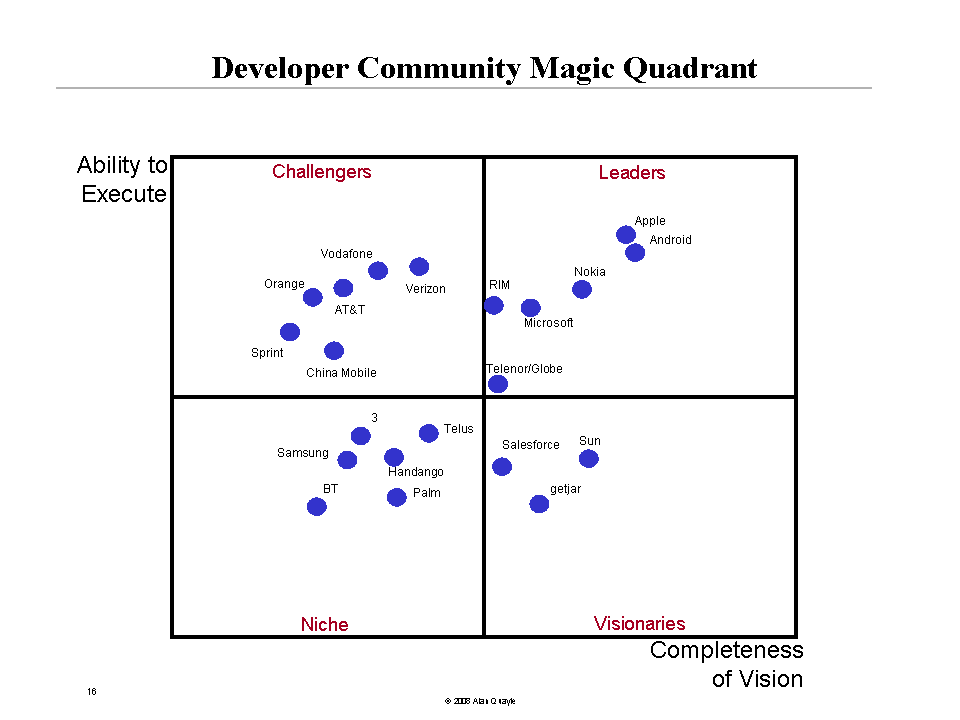I show below a sample of a taxonomy of the operators’ developer communities across consumer applications (e.g. widgets), consumer content (music, ring-tones, caller ring back tones, wallpaper), enterprise applications (e.g. field force automation tools) and enterprise IT (that is having enterprise IT departments build apps for their employees only). As discussed in the
“Emerging App Store Ecosystem” weblog article operators should really focus on application ingestion than developer community, hence why I include operators such as Telus which have an ingestion focus.

I then show a sample of the consumer electronics and operating system developer communities. I’ve also included some of the aggregators such as GetJar and Handango, but even GetJar has a developer community in helping content owners get their content out to mobile users. But what’s interesting in comparing the two taxonomies is the focus of Apple, RIM and Microsoft. They’re squarely targeting consumer and enterprise opportunities, while operators continue their obsession with consumer app stores. I’ve discussed in several articles, including recently in the “Where next for operators’ service innovation” weblog article, the importance of enterprise customers where many operators have a natural advantage in providing a broad range of value added services. The key take-away is operators must put equal effort in their enterprise service innovation, else let Apple, RIM, Microsoft, and now Skype and soon Android/Google start eating their lunch in that market segment as well.

Finally, I show below a comparison of both the CE/OS and operator stores. I include both Globe and Telenor CPA (Content Provider Access) in the leader segment as they’ve focused on their partners’ needs, in the case of Telenor had a decade long commitment, and most importantly achieved solid financial results. Telus is niche as its focused on small medium enterprise customers. Most operators remain in the challenger segment, and I’ve
explained previously what is limiting them.
